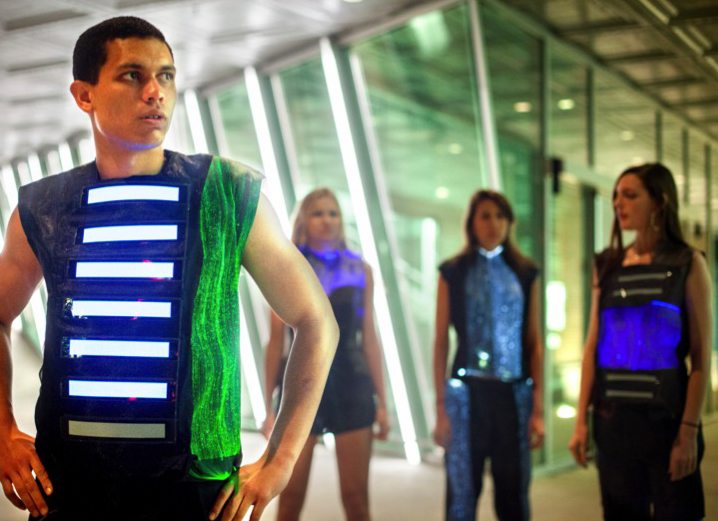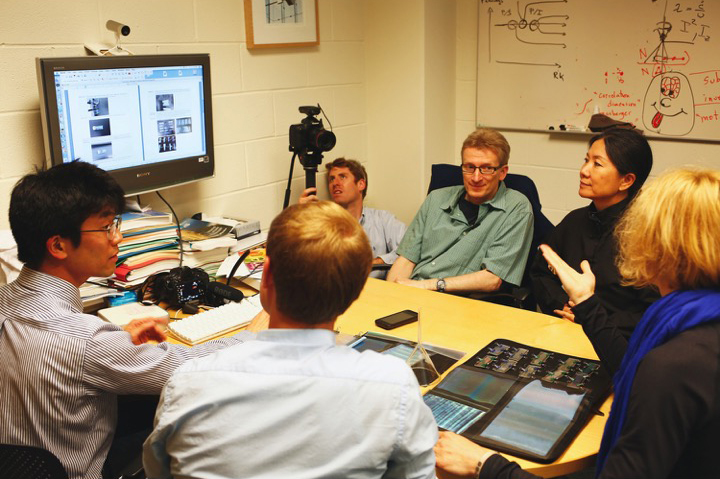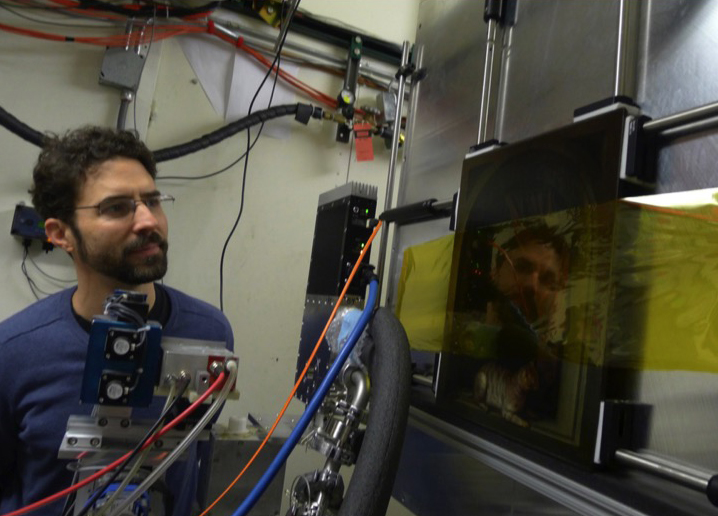At Cornell Silicon Valley, technology meets the arts
By Kate Klein



Combine the technology of fiber science with the art of fashion design, and what is the result?
“Smart clothing [that] can do amazing, amazing things,” said Alan Mathios, the Rebecca Q. and James C. Morgan Dean of the College of Human Ecology during a Cornell Silicon Valley presentation Nov. 11, speaking of Cornell-developed garments that change color to music or even prevent disease.
The event, “Where Art and Technology Intersect: Fostering Innovation at Cornell,” was held at Salesforce.com offices in San Francisco, and showcased research, teaching and artistic collaborations among faculty and students across Cornell’s colleges.
“The Bay Area is known for tech,” said Nancy Abrams Dreier ’86, director of West Coast Engagement and Cornell Silicon Valley, “but we’re finding there is interest in other subjects, including the arts. This event was an opportunity to join both of the sides of the brain together, the art and the technology.”
On the panel, Mathios was joined by Kent Kleinman, the Gale and Ira Drukier Dean of Architecture, Art and Planning; and Stephanie Wiles, the Richard J. Schwartz Director of the Herbert F. Johnson Museum of Art. Janet Bishop ’85, the Weisel Family Curator of Painting and Sculpture at the San Francisco Museum of Modern Art, moderated.
“We are fortunate to have here with us three truly visionary leaders, all of whom are deeply engaged in issues of arts and technology on campus,” Bishop said as she opened the session.
Mathios discussed the collaborative development of an insecticide-embedded dress that fights off malaria-infested mosquitos along with other cross-disciplinary efforts in Human Ecology between fashion and material science.
Kleinman showed slides of “A Needle Woman,” a temporary art installation on the Arts Quad co-created by visual artist Kimsooja and materials science and engineering professor Uli Wiesner.
Wiles explained that the Johnson Museum recently received grant money from the Andrew W. Mellon Foundation to create courses with Cornell faculty across disciplines. One of these courses, "Art|Science Intersections: More than Meets the Eye," a spring 2015 seminar combining the Department of History of Art and Visual Studies, the School of Electrical and Computer Engineering and the Cornell High Energy Synchrotron Source, recently uncovered previous versions of a painting buried beneath the visible surface of a 17th-century Dutch painting using the synchrotron, a high-intensity X-ray source.
“Students had a front-row seat to an important discovery,” said Wiles. “This process revealed startling details that don’t show up in conventional x-rays.”
Technology is also driving art making, she said.
Kleinman said: “The arts are everywhere at Cornell. Every college has something going on that’s related to the arts, but as a whole they are quite invisible.”
Kleinman explained that he, Mathios and Wiles, in addition to other deans, have been discussing further integration of the arts throughout Cornell. He noted the deans are encouraged that President Elizabeth Garrett is supportive of the arts.
“I think the fact that we have deans working so well together speaks well for Cornell,” said Rebecca Morgan ’60, who attended the event. She has learned from conversations with Mathios, whose deanship she endowed with her husband, James Morgan ’60, MBA ’63, that similar academic collaborations are going on among all of Cornell’s undergraduate colleges.
Cornell is uniquely positioned among American universities to foster further innovation between technology and the arts, Mathios said: “I think there’s something innate about the culture at Cornell that provides fertile ground for the arts.”
Kate Klein is a writer for Alumni Affairs and Development.
Media Contact
Get Cornell news delivered right to your inbox.
Subscribe